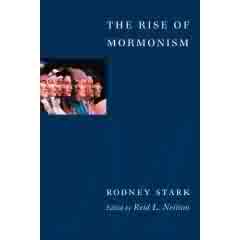 I am currently reading Mission in the Old Testament: Israel as a Light to the Nations (Baker, 2000) by Walter Kaiser, along with many other books for seminary and ministry. I have found his discussion of the missio Dei at the heart of Israel's call, as a responsibility and not merely national privilege, to be helpful in understanding the Old Testament foundation for New Testament missions and the Great Commission. One of the more interesting areas Kaiser touches on is the debate over whether Israel's call to the nations was centripetal or centrifugal. That is, was Israel to serve in a passive role that was inward-moving toward the center, toward Israel and Zion by Gentile "seekers," or was Israel's call to be centrifugal, outward-going from the center to the nations of the world? While many argue for a centripetal role for Israel, Kasier argues briefly but strongly for a centrifugal role (through biblical passages such as Psalm 67, 96 and 117, not to mention the Jonah) , and I believe correctly so. Israel was called and sent in outward moving fashion by Yahweh, and a centripetal response to the nations became one of her many sins.
I am currently reading Mission in the Old Testament: Israel as a Light to the Nations (Baker, 2000) by Walter Kaiser, along with many other books for seminary and ministry. I have found his discussion of the missio Dei at the heart of Israel's call, as a responsibility and not merely national privilege, to be helpful in understanding the Old Testament foundation for New Testament missions and the Great Commission. One of the more interesting areas Kaiser touches on is the debate over whether Israel's call to the nations was centripetal or centrifugal. That is, was Israel to serve in a passive role that was inward-moving toward the center, toward Israel and Zion by Gentile "seekers," or was Israel's call to be centrifugal, outward-going from the center to the nations of the world? While many argue for a centripetal role for Israel, Kasier argues briefly but strongly for a centrifugal role (through biblical passages such as Psalm 67, 96 and 117, not to mention the Jonah) , and I believe correctly so. Israel was called and sent in outward moving fashion by Yahweh, and a centripetal response to the nations became one of her many sins.I see much the same thing in our American churches. While we may still have a strong sense of outward-going missions overseas, we are largely centripetal, inward-moving and attractional in the way we "do church" in America. How many times has the reader been encouraged to simply invite someone to church as a leading form of "evangelism?"
In their excellent book, The Shaping of Things to Come: Innovation and Mission for the 21st-Century Church (Hendrickson/Strand, 2004), Michael Frost and Alan Hirsch contrast centripetal and centrifugal, or attractional and missional forms of church that desire to reach a group of radio control car enthusiasts.
The difference in these approaches is clear, and I believe the centrifugal, missional and incarnational approach is the one that reflects the calling of God, both to Israel and to the church. If we have any desires to see a repeat of the amazing estimated 40-percent-a-decade growth rate that the early church experienced during the first three centuries before Constantine (The Rise of Christianity by Rodney Stark [HarperSanFrancisco, 1997]), then the church in the West and America must recapture the centrality of the missio Dei, and its centrifugal nature applied to people groups and subcultures in recognition of the importance of missions through social networks within their subcultures."Next to the field was an asphalted area where a group of model-car enthusiasts had set up a track and were using remote controls to race their cars against one another's. The constant buzz of the miniature motors caught our attention and we wandered over to watch what they were doing. We soon realized we had encountered a lost suburban tribe. Everyone looked the same. They all wore tight black jeans and checkered flannel shirts. They wore baseball caps with car manufacturers' logos on them. They had parked their cars - virtually all drove pickups - beside the track, and their wives or girlfriends sat in one of the truckbeds talking and laughing loudly. It was a tribe in every sense of the word - dress code, language, culture, and customs. We learned that once a month on a Sunday morning they met to race each other, to discuss the latest designs in model cars, and to drink and laugh and build community.
"If the nearby church decided that this suburban tribe needed to hear about the saving work of Christ, how would they reach them? The attractional church would hold special services for model-car racers. It would design an excellent flyer explaining that Jesus loves model-car enthusiasts, and they would place one under the windshield wipers of each pickup. It would try to find a recently converted model-car enthusiast and have him share his testimony one Sunday morning. The attractional church would seek to do anything it could to draw the car racing fraternity into its church building. This might even work if you're dealing with a localized community with some geographic proximity to the church's building. But a car club is probably a citywide community, and its members probably drive great distances to come to its monthly meetings. They are not drawn together by some geographic proximity, but by a commonly held interest. And to complicate matters further, they meet on Sunday mornings!
"The attractional church is stuck! Even though it has a close-knit community of people (likely non-churchgoers) right outside its door, it has no mechanism for sharing Christ with them. Since they (the car club members) are not likely to turn up at the church service one Sunday (doesn't the attractional church love stories of people miraculously turning up at the church service searching for meaning and purpose!), the only way to share Christ's love with them must be to go to them. It would be a decidedly incarnational choice if a few members of a local church, so moved by compassion for the car enthusiasts right across the road, chose to buy a model car and join the club! This would be the kind of thinking and acting we're talking about. If the spirit of our missionary God were to sweep through such a church, we don't doubt that the church itself might buy a few model cars and commission some of its members to miss the morning service so they can fully enter into the community of the car club. By racing cars and repairing cars, they could earn the right of relationship to share their thoughts on life and their love for Jesus. This is the incarnational church in action. If a few car racers came into relationship with Christ, they should not be encouraged to leave the club and join the church. Rather, a home church could be established, and the brand-new Christian car enthusiasts could worship God in the context of their tribal identity." (p. 42-43)








